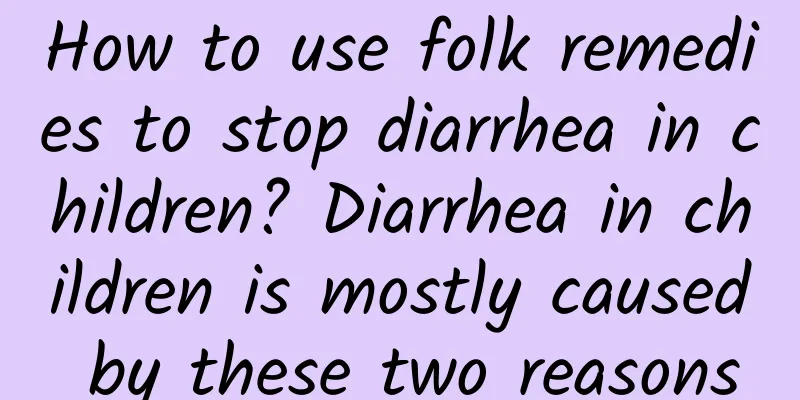How to quickly reduce neonatal jaundice? How long does it take for neonatal jaundice to subside?

|
After the fetus is born, the environment is very different from that in the womb, and various discomfort reactions will gradually appear. Among them, neonatal jaundice is a very obvious type, but most neonatal jaundice will subside in about two weeks. However, this period is accompanied by many parents' worries, hoping that the jaundice will disappear as soon as possible. So how can neonatal jaundice go away quickly? Let's take a look below. How to quickly reduce neonatal jaundice 1. Blue light therapy Blue light irradiation is a simple, effective and fast-acting method for treating neonatal jaundice. Through light irradiation, the bilirubin in the body can be converted into other substances, so that the bilirubin that continues to accumulate in the body can find another outlet. The symptoms of jaundice can gradually improve and eventually disappear completely. 2. Sunbathing Using the blue and green light in the sun to treat and reduce baby's jaundice is the most common and direct treatment method. Newborn babies are more delicate, so you must take protective measures when basking in the sun, such as protecting the baby's eyes, not basking in the sun for too long, etc. 3. Medication Oral use of Yinzhihuang: It has a certain effect on the treatment of jaundice, but some children will have diarrhea after taking it. If the jaundice does not improve and the child has severe diarrhea, stop using it. How long does it take for neonatal jaundice to subside? 1. Normal (physiological jaundice) It appears 2-3 days after the birth of the newborn. In mild cases, it is light yellow and limited to the face and neck, or spreads to the trunk. The eyes may also turn yellow. It disappears after 2-3 days, and the skin color returns to normal on the 5th to 6th day. It lasts longer in premature babies. Physiological jaundice usually has no other discomfort symptoms except yellowing of the skin and eyes. Occasionally, the baby may have a slightly poor feeding. Once again, 60%-70% of neonatal jaundice is physiological and can disappear on its own. Parents do not need to worry too much. 2. Abnormal pathological jaundice Usually occurs early, within 24 hours after the baby is born, and the whole body may turn yellow, and the vomitus and cerebrospinal fluid may also turn yellow. It may not improve after 2-3 weeks, and the condition may even worsen or recur. Pathological jaundice is often accompanied by pathological symptoms, such as low intelligence, unwillingness to breastfeed, and even manifestations of some primary diseases. Pathological jaundice can affect children's hearing, nervous system, etc. It requires parents and medical staff to provide adequate care and treatment. The above content is to introduce how to reduce neonatal jaundice quickly and how long it takes for neonatal jaundice to subside. I hope it can help you. Don't be too nervous or take it lightly when your baby has jaundice. First see if it is physiological or pathological. If it is physiological, just pay more attention to diet. If it is pathological, then you need a doctor's treatment. |
>>: High jaundice after baby is born is related to this bad habit during pregnancy
Recommend
Why does children’s cough never get better?
Children's persistent cough may be related to...
What to do if children have allergic rhinitis and cough
If children have allergic rhinitis or cough, they...
What are the examinations for pediatric hernia? What are the types of pediatric hernia?
Some parents may find that their children have pe...
Is polio harmful to the body?
We all know that children's resistance is not...
Can pneumonia in children be cured?
Nowadays, many children have pneumonia. Because c...
What is Kernicterus
Kernicterus is actually a severe form of neonatal...
What are the examination items for pediatric eczema?
Eczema is a common inflammatory skin disease of t...
Why does the baby cough in the morning? Why does the baby cough in the morning?
A baby's cough in the morning may just be a n...
How to avoid indigestion in babies How to deal with indigestion in babies
Digestive system diseases in children are common ...
Symptoms of congenital polio
In recent years, the number of polio patients has...
How to check for mumps
How to check if you have mumps? When it comes to ...
Types, symptoms and treatment of pneumonia in children
Pediatric pneumonia is a common respiratory disea...
Adverse effects of pneumonia in children
Nowadays, most young men and women lack experienc...
What are the drugs for patent ductus arteriosus?
What are the medicines for treating patent ductus...
What is hand, foot and mouth disease? What should I do if my baby has hand, foot and mouth disease?
Hand, foot and mouth disease is a very fast-sprea...









